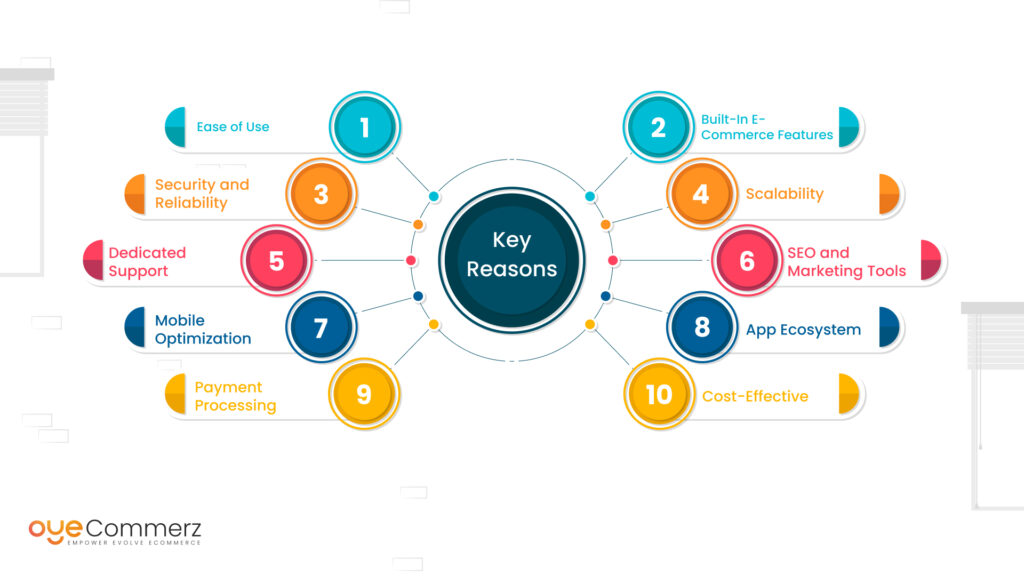Shifting from WordPress to Shopify marks an promising step toward streamlining your online store operations. As businesses expand, choosing a platform that aligns with scalability, UX, and flexibility is essential. Shopify is widely recognized as a favorite for e-commerce professionals, providing superior adaptability, data protection, and ease of use. In this guide, we will delve into the transformative impact of this migration, discuss the advantages, and share actionable steps to facilitate a smooth move.
1. Top Reasons to Transition from WordPress to Shopify
WordPress, paired with WooCommerce, has served countless online stores. However, as companies expand, issues like reliance on plugins, security vulnerabilities, and complex setups often obstruct growth. Shopify, specifically created for e-commerce, addresses these issues with an comprehensive, intuitive solution. Statistics supports this transition—Shopify powers over 4.4 million websites worldwide, with a reported 10% boost to sales performance for numerous merchants after migration.
2. Shopify's Perks for Thriving Online Stores
Shopify’s powerful platform is tailored for expanding brands. Its standout features are:
- Seamless Customization: Shopify provides over 80 expertly crafted themes.
- Built-in Features: Features like Shopify Payments and integrated SEO streamline operations.
- Global Reach: Currency versatility and localization features enable brands to expand internationally.
Additionally, Shopify delivers an uptime rate of 99.98%, guaranteeing your website is always operational.
3. Getting Ready for Your WP-to-Shopify Transition
Prior to starting the migration process, assess your current store. Analyze product data, client information, and search engine rankings. Resources such as Shopify’s Migration Kit or external tools help ease the transition. Develop a detailed strategy, making sure all resources—product descriptions, images, and blog content—are ready for seamless import.
4. Data Migration: A Critical Step
Data migration forms the foundation for a smooth platform switch. When migrating from WP to Shopify, prioritize:
- Product Information: SKU, descriptions, and categories.
- Client Information: Emails, purchase records, and custom fields.
- SEO Optimization: Retain meta tags, URLs, and redirects to maintain search rankings.
Leverage tools such as LitExtension to facilitate seamless migration while reducing mistakes.
5. Tailoring Your Shopify Store to Fit Your Brand
Post-migration, personalizing your Shopify store helps it reflects your business identity. Utilize Shopify’s intuitive Shopify store migration checklist page builder to create layouts with ease. Shopify's templates are mobile-responsive, ensuring a seamless UX across platforms—a key point, since 74% of e-commerce traffic is generated by mobile visitors.
6. How to Protect Your SEO Rankings When Switching Platforms
Search engine optimization is crucial for maintaining your online presence during migration. Shopify is highly optimized for search engines with organized link formatting, built-in optimization tools, and smooth content management. Make sure you:
- Implement 301 redirects for old URLs.
- Optimize new pages with keyword-rich content.
- Leverage plugins like Plug in SEO to track analytics after the switch.
7. Post-Migration Shopify cart migration Testing
Once the migration is complete, conduct thorough testing.
Review: - Page load times (Shopify boasts faster speeds compared to WordPress).
- Functionality of payment gateways and checkout processes.
- Adaptability across devices.
Quality assurance guarantees your store provides a seamless shopping experience from day one.
8. Real-Life Success Story
One such migration success story is Gymshark, a fitness apparel brand that transitioned to Shopify. Post-migration, the company experienced a 60% boost in mobile sales and reduced site downtime. This showcases the capabilities of Shopify in enhancing e-commerce growth.
9. Challenges and Solutions
Migration comes with challenges, such as data integrity and reconfiguring custom functionalities. However, Shopify’s robust support and third-party experts make overcoming these hurdles manageable. Collaborating with qualified Shopify developers ensures a smooth transition.
10. Starting Your Journey with Shopify
Switching from WP to Shopify represents a strategic decision to online retail. By focusing on growth, streamlining operations, and improving buyer satisfaction, Shopify enables companies to succeed in competitive markets.
Conclusion
Transitioning from WordPress to Shopify is a strategic move that can greatly enhance your online business performance. With a well-structured strategy, the appropriate resources, and expert support, you can achieve new growth opportunities.
Ready to make the leap? Reach out today to learn how our Shopify migration services can transform your online store. Contact us now, or consider: Is it time to seize Shopify’s advantages for your store?
